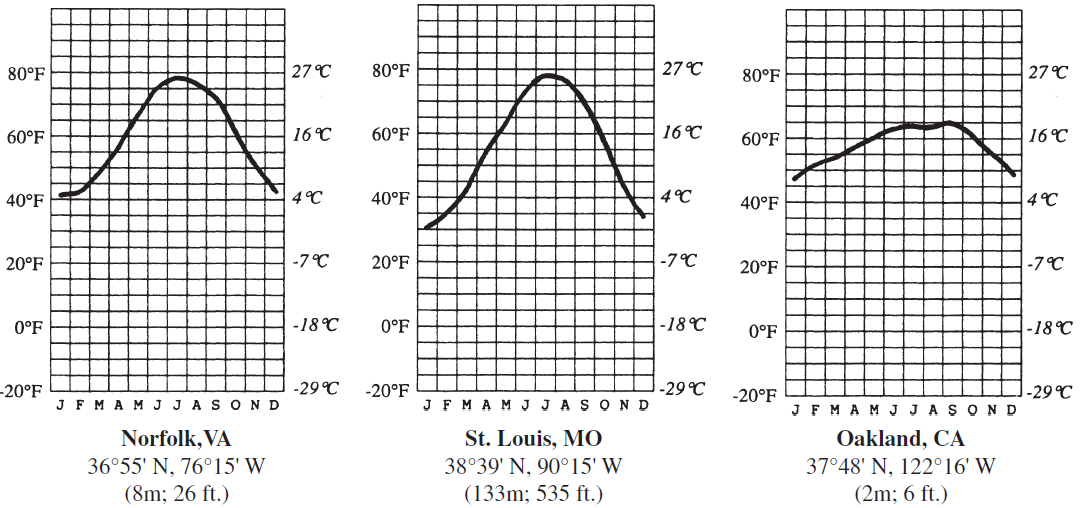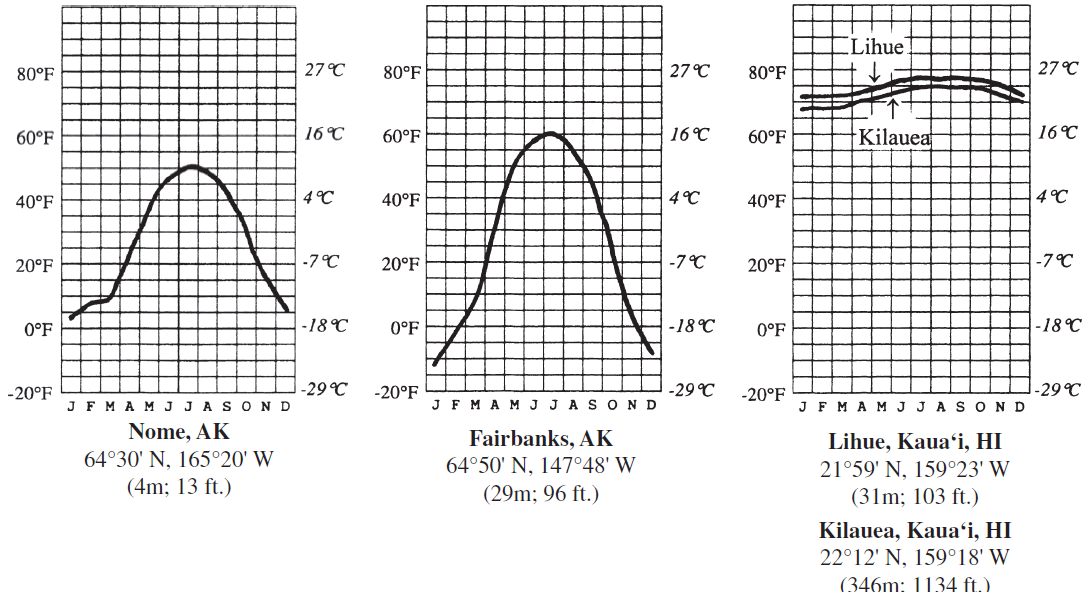Which factor primarily explains the different temperature patterns of St. Louis and Oakland?
Six charts showing the average monthly temperature (in °C and °F) for seven U.S. cities are provided (the first letter of each month of the year is shown along the bottom of the charts). For each of the cities, the latitude and longitude, as well as the elevation, are provided.


Answer the question by comparing the temperature charts. In your answers, consider the one temperature control factor that is most responsible for the patterns shown (choose from latitude, land–water contrasts, wind patterns, or altitude). You may use the same answer for more than one question. You should locate each of the cities on a world map before trying to answer the question. If altitude is the main factor cited, calculate the expected temperature difference between the two cities based on the average lapse rate.
Land-water contrasts: St. Louis has continental location vs. maritime for Oakland.
You might also like to view...
Although water vapor accounts for about 60% of the atmospheric greenhouse effect, it is the increase of ____ in the atmosphere that appears to be the main cause of global warming
A) carbon monoxide B) ozone C) carbon dioxide D) argon
Instructions: Choose one answer from each pair of selections. ADVECTION | RADIATION fog forms when the wind moves warm, moist air over a sufficiently colder surface and the moist air is cooled to its saturation point
State the principle of fossil succession in your own words
What will be an ideal response?
We know from the Apollo missions and unmanned probes that the moon's surface is covered with loose, unconsolidated material with a texture similar to soil on earth. How did this material form on the moon?
A) The material is mostly volcanic ash ejected from volcanos that are no longer active. B) The loose material is mostly micrometeorite fragments and ejecta from impact craters, so is very different from soil on Earth. C) The material is produced by spalling from rock surfaces caused by the extreme heat-cold cycles as the moon rotates through a 1 lunar day, or approximately one Earth month. D) The same as Earth, but soils are ancient from a time when the moon still had an atmosphere and water.